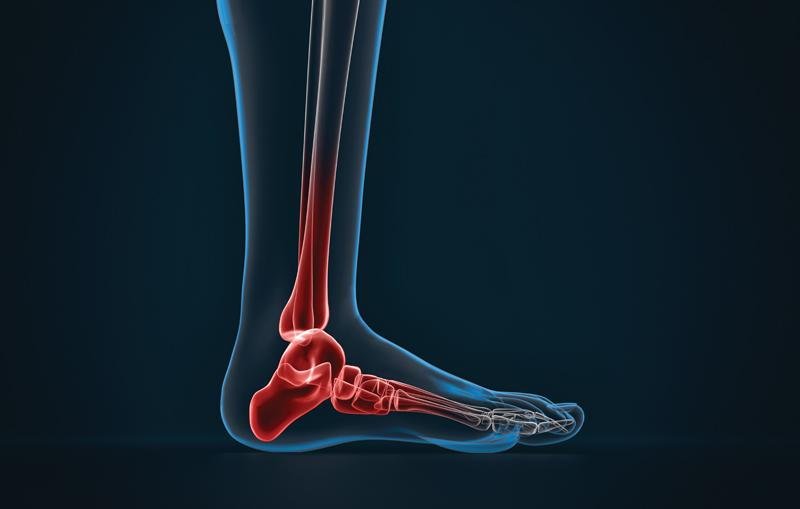Ankle Pain
Ankle pain refers to any type of pain or discomfort in your ankles. This pain could be caused by an injury, like a sprain, or by a medical condition, like arthritis. According to the National University of Health Sciences (NUHS), an ankle sprain is one of the most common causes of ankle pain — making up 85 percent of all ankle injuries. A sprain occurs when your ligaments (the tissues that connect bones) tear or get overstretched.

Most ankle sprains are lateral sprains, which occur when your foot rolls, causing your outside ankle to twist towards the ground. This action stretches or rips the ligaments.
A sprained ankle often swells and bruises for about 7 to 14 days. However, it may take a few months for a severe injury to heal fully.
Read on to learn the causes of ankle pain and how to treat it.
A sprain is a common cause of ankle pain. Sprains are generally caused when the ankle rolls or twists so that the outside ankle moves towards the ground, tearing the ligaments of the ankle that hold the bones together. Rolling the ankle can also cause damage to the cartilage or tendons of your ankle.
The complex joint that joins the lower leg bones to the foot is the ankle. It is in charge of supplying stability and enabling diverse motions, including sprinting, jumping, and walking. Ankle pain can appear in a variety of ways, from mild aching to severe, painful condition. It can happen in the ligaments, tendons, or bones around the joint as well as on the inside or outside of the ankle.
Pain can also be a result of:
- Arthritis, specifically osteoarthritis
- Gout
- Nerve damage or injury, such as sciatica
- Blocked blood vessels
- Infection in the joint
There are also common causes of ankle pain such as:
- Ankle sprains: The most typical reason for ankle pain is an ankle sprain. They happen when sudden foot twisting or rolling causes the ligaments that support the ankle to stretch or rip. Although frequently observed in athletes, this injury can affect anyone.
- Arthritis: The ankle joint may be affected by diseases including osteoarthritis and rheumatoid arthritis, which can cause inflammation, stiffness and chronic discomfort.
- Tendonitis: Tendinitis, which causes discomfort and swelling, can be brought on by repetitive tension or overuse of the ankle tendons. This ailment is widespread in runners and people who participate in repetitive ankle motion-requiring activities.
- Fractures: An ankle fracture can result in excruciating pain, swelling, and immobility. A fall, a direct hit, or an injury sustained while playing sports can all result in fractures.
- Bursitis: Restricted mobility can result from bursitis, an inflammation of the bursae, which are tiny fluid-filled sacs that cushion the joint.
Gout occurs when uric acid builds up in the body. This higher-than-normal concentration of uric acid (a by-product of the body’s normal breakdown of old cells) can deposit crystals in the joints, causing sharp pain.
Pseudogout is a similar condition where calcium deposits build up in the joints. Symptoms of both gout and pseudogout include pain, swelling, and redness. Arthritis can also cause ankle pain. The inflammation of the joints is known as arthritis. Multiple types of arthritis can cause pain in the ankles, but osteoarthritis is the most common. Osteoarthritis is often caused by wear and tear on the joints. The older people are, the more likely they are to develop osteoarthritis.
Septic arthritis is arthritis that’s caused by a bacterial or fungal infection. If the ankles are one of the infected areas, this can cause pain.
